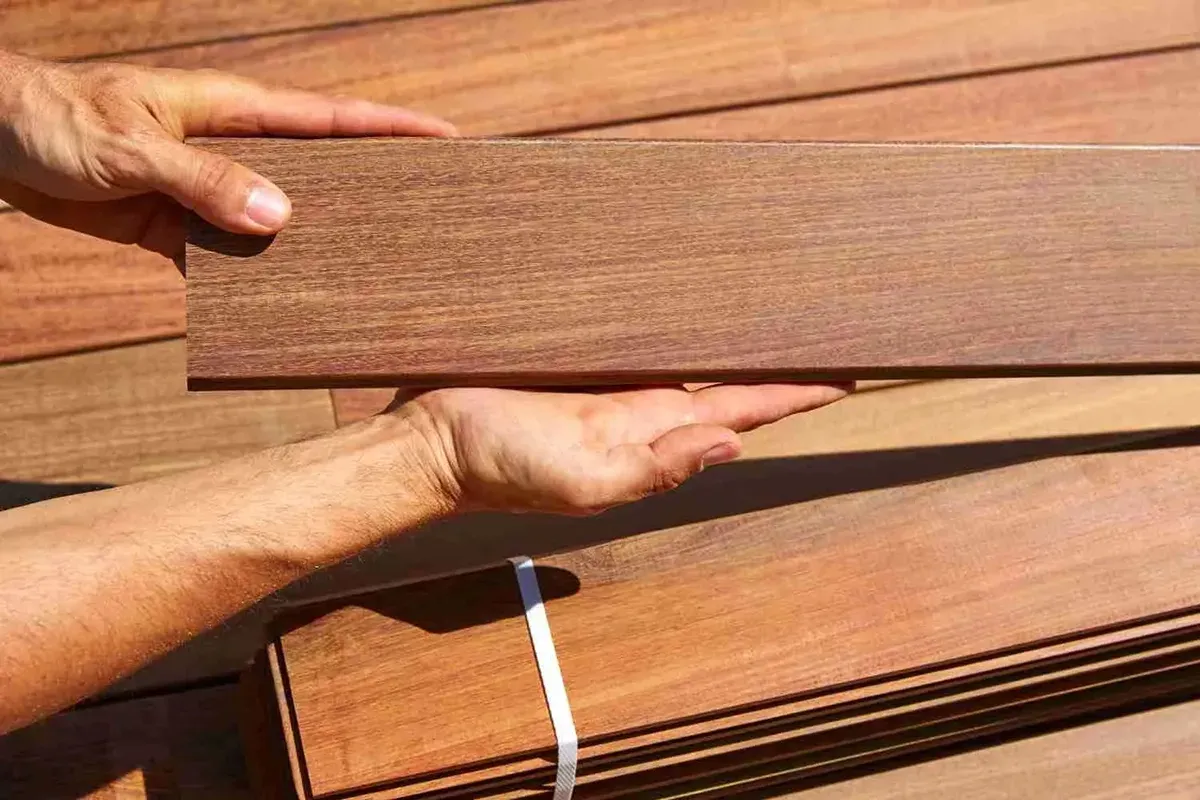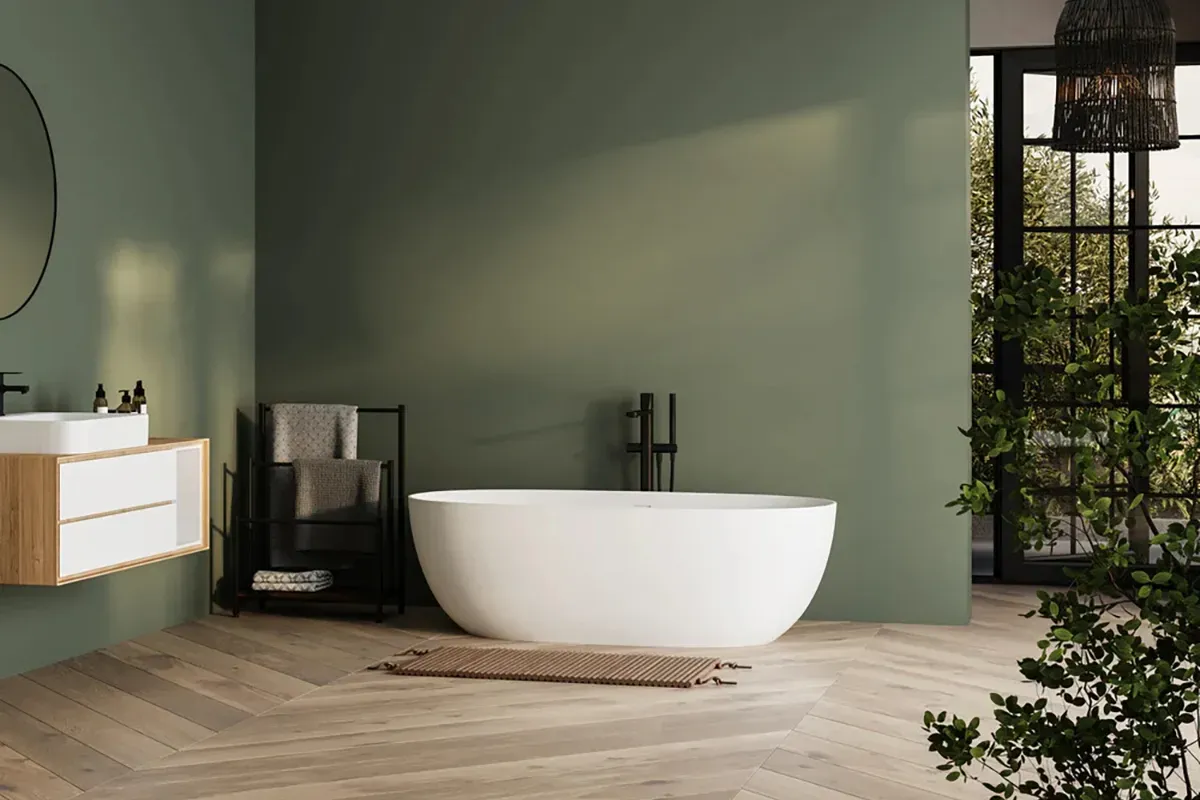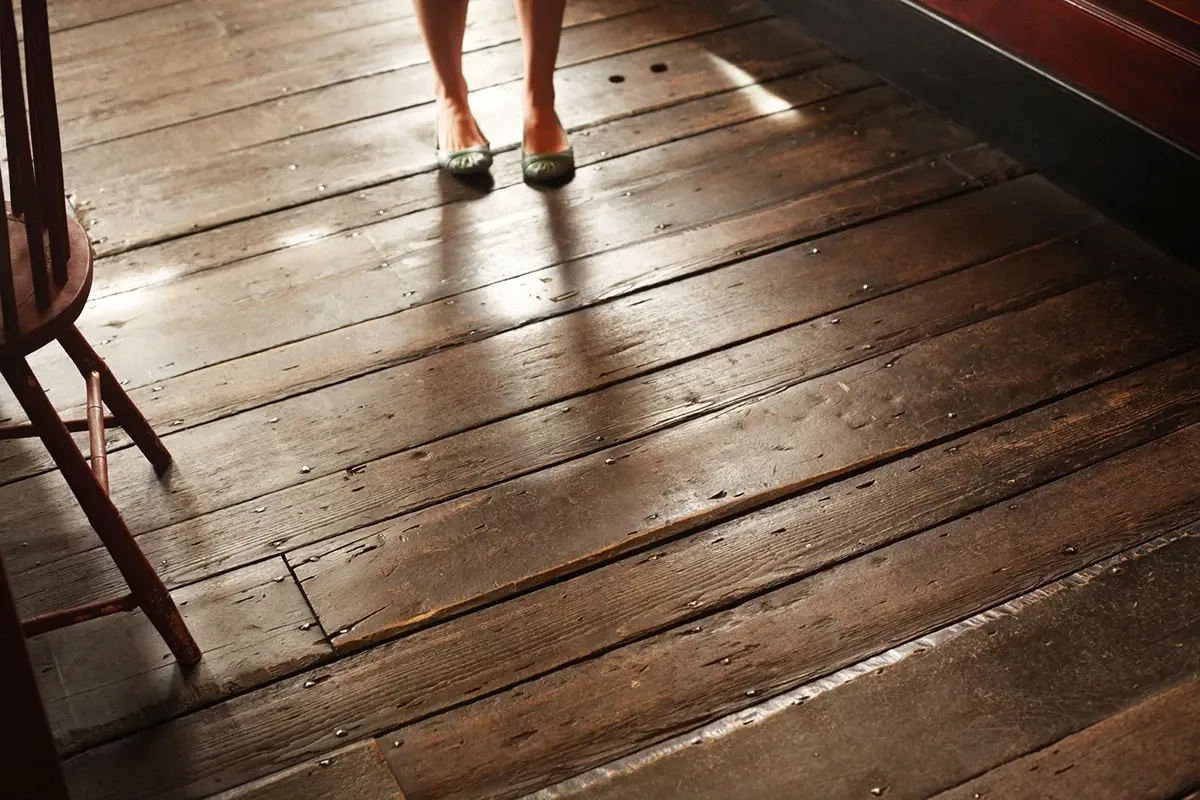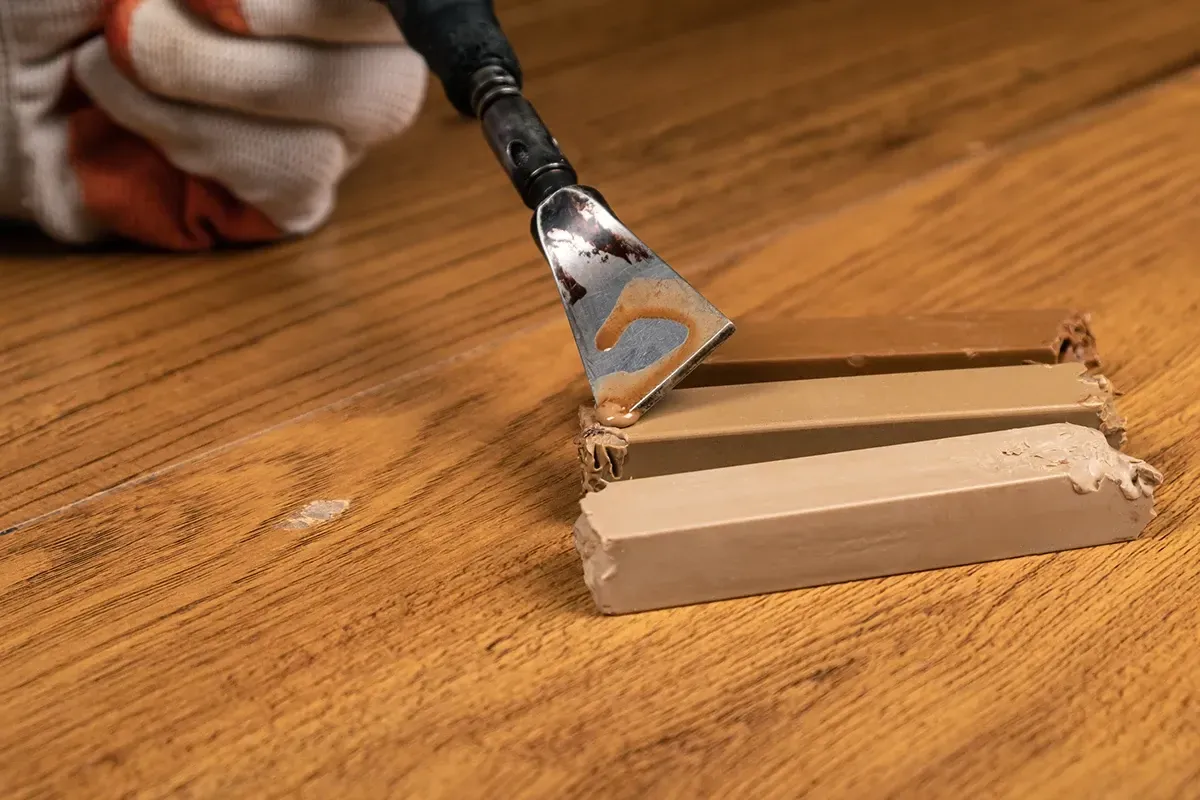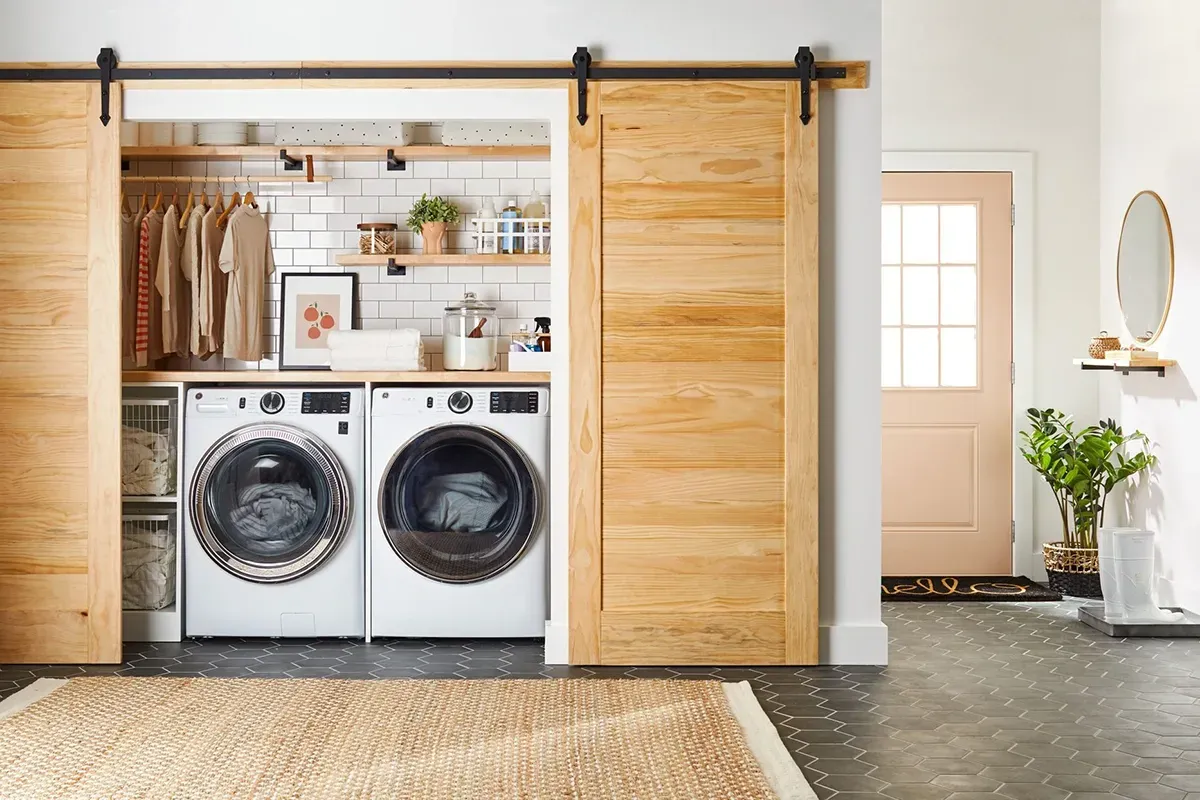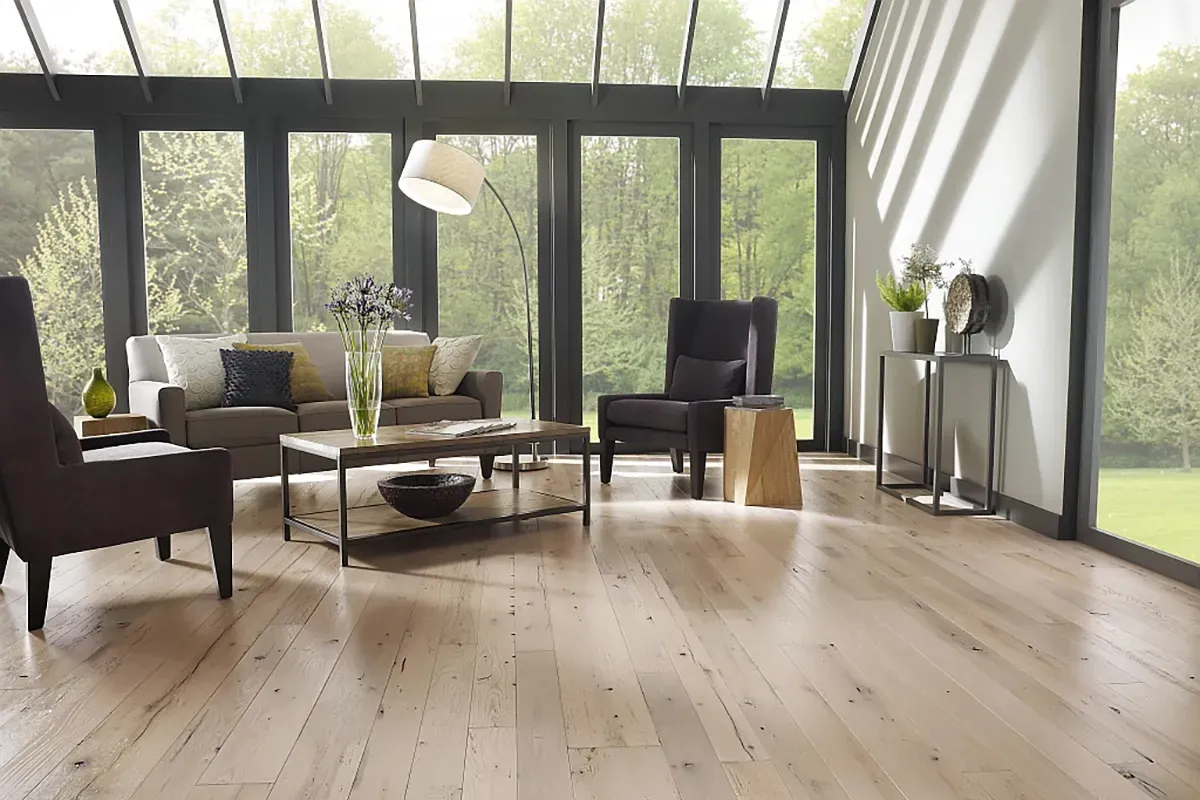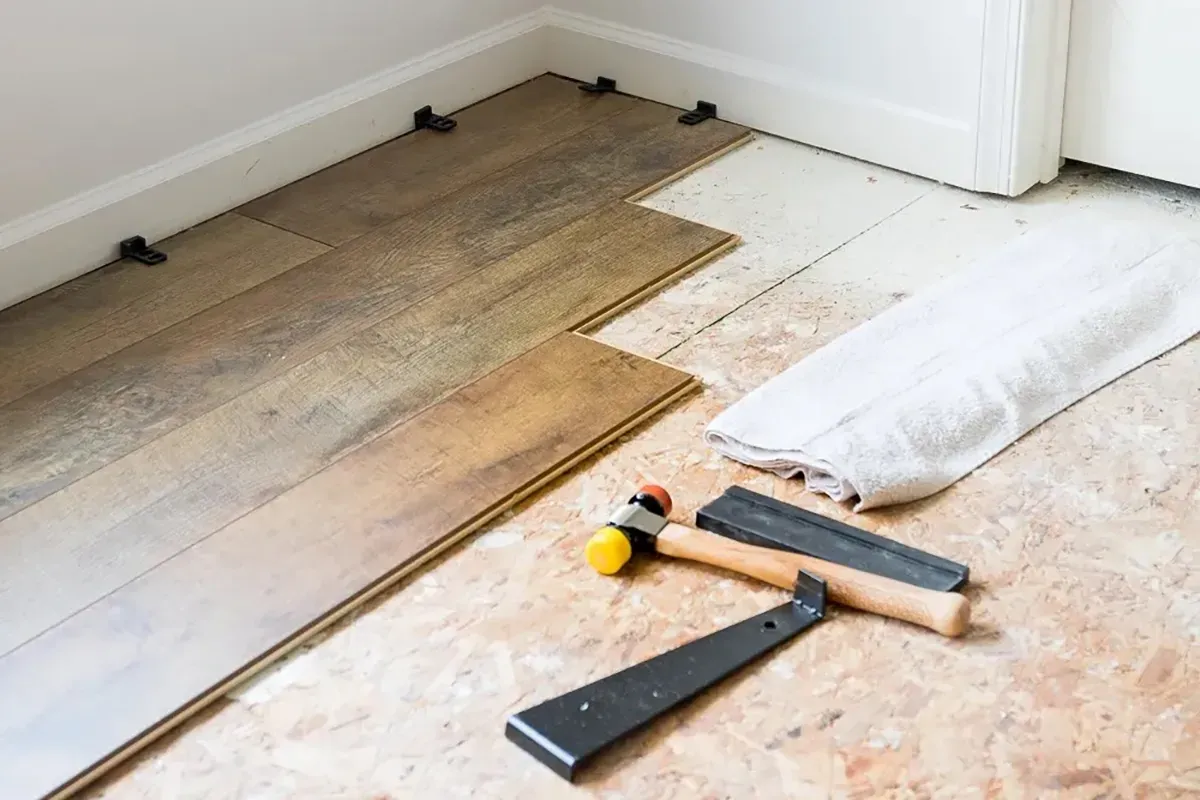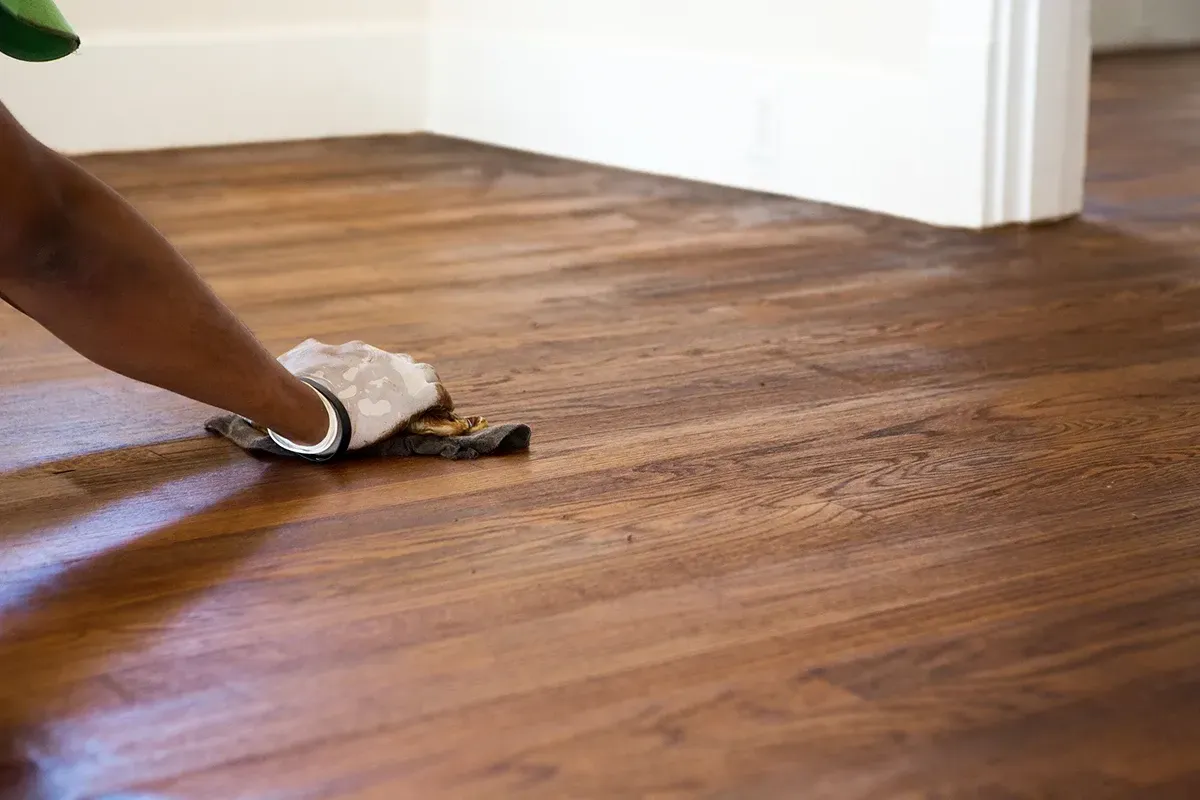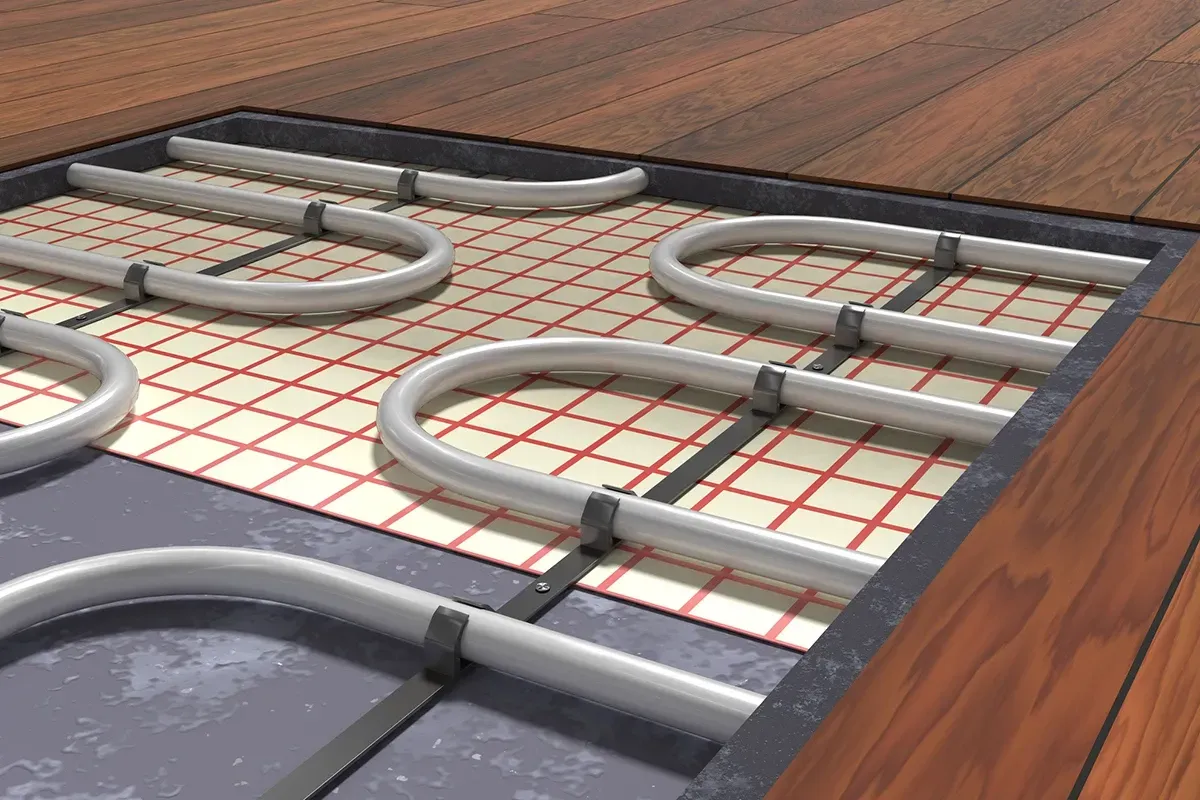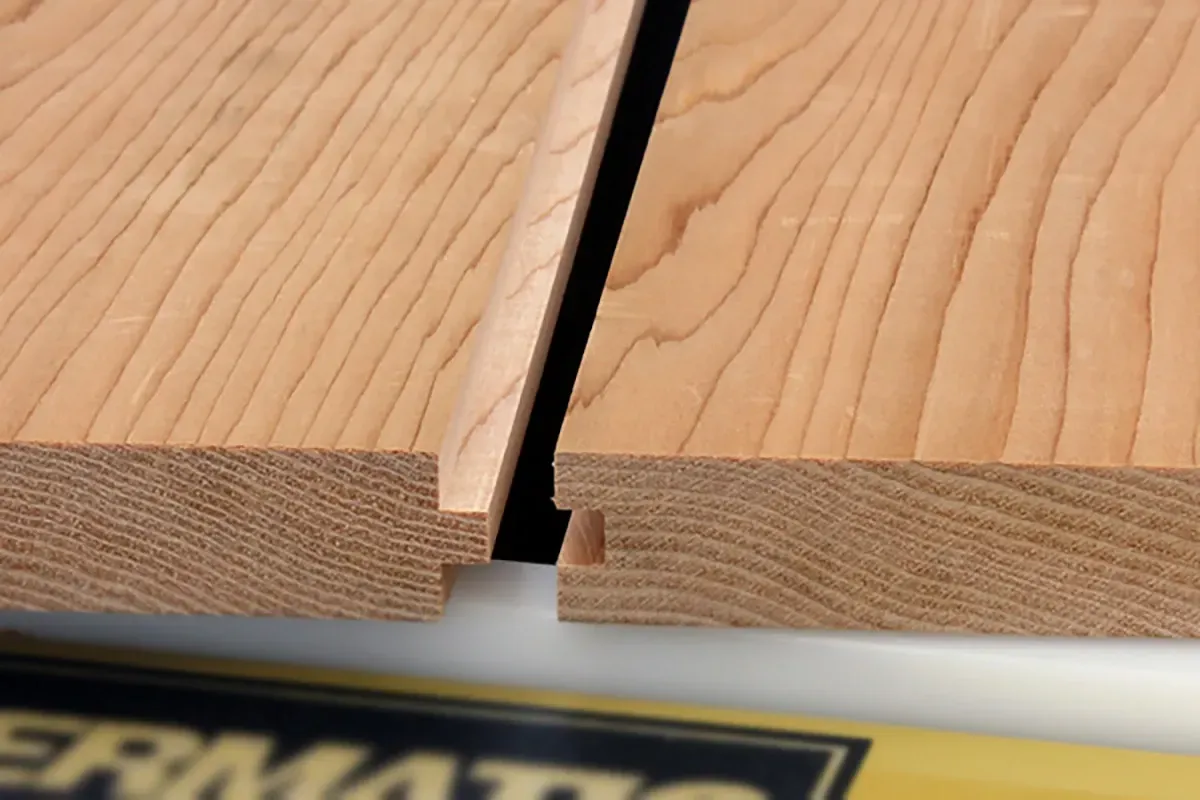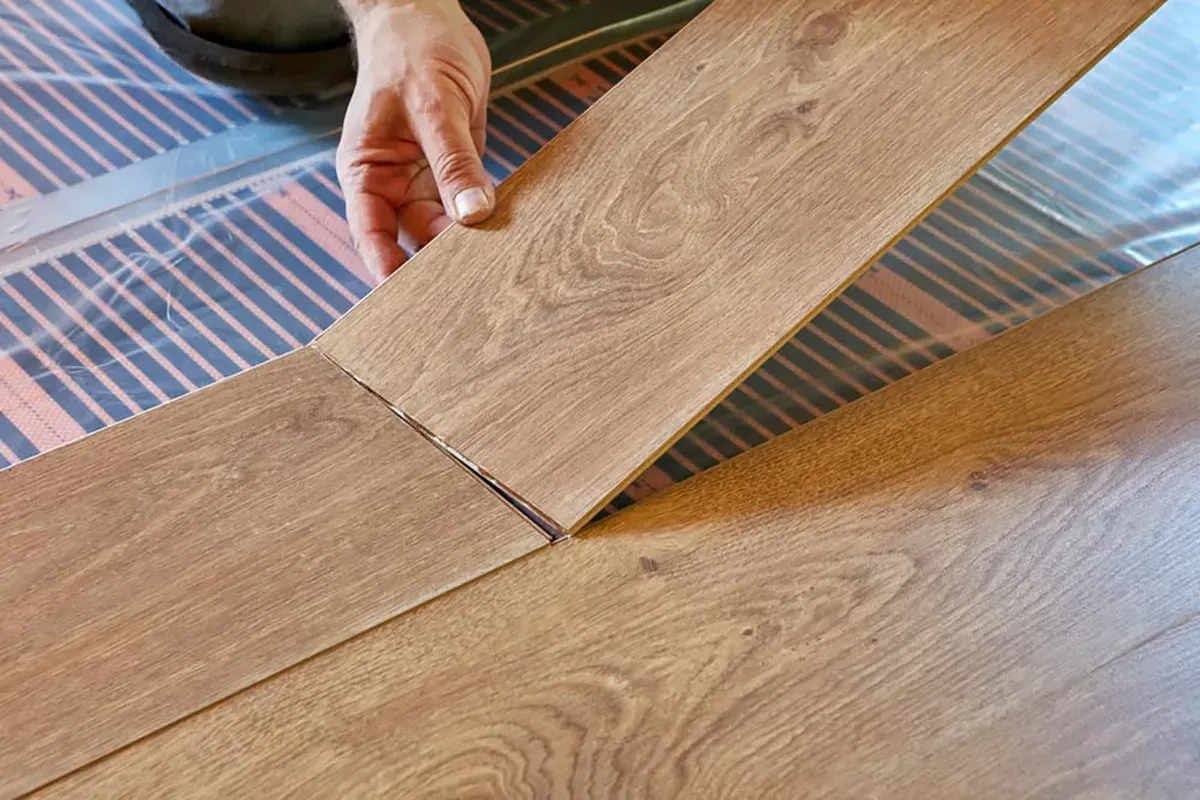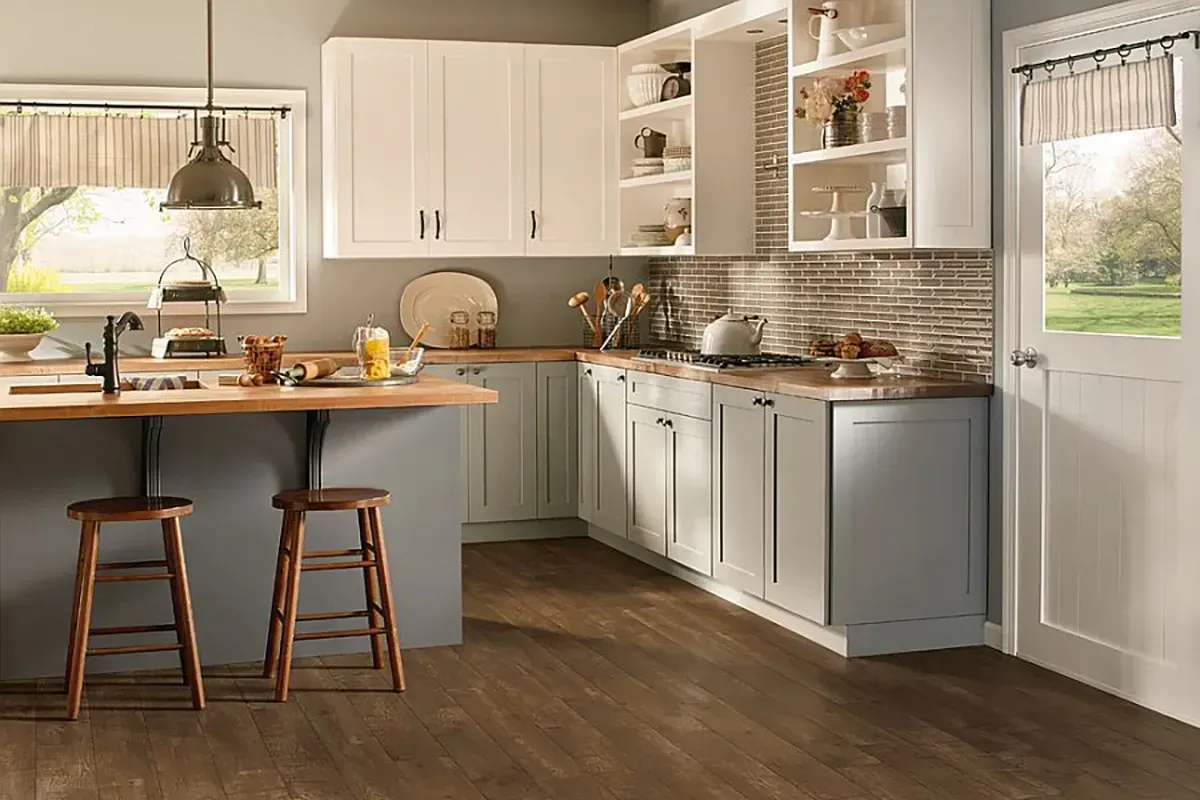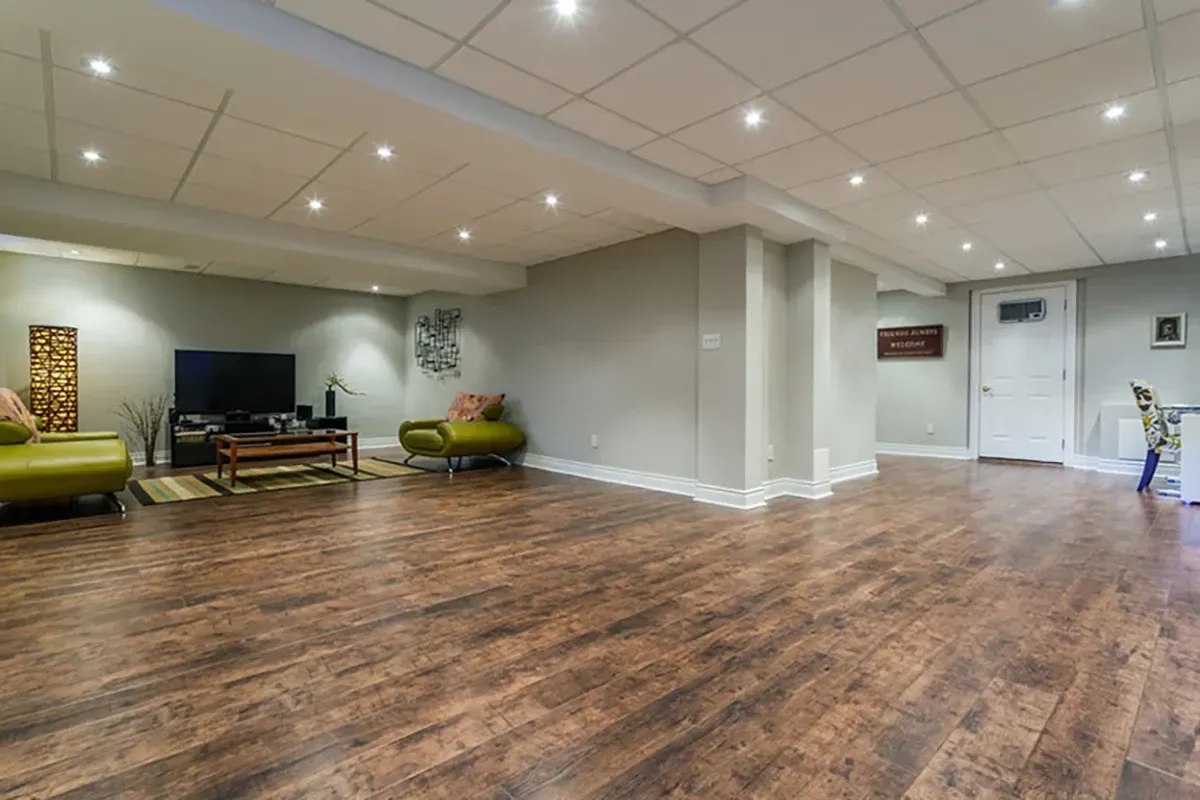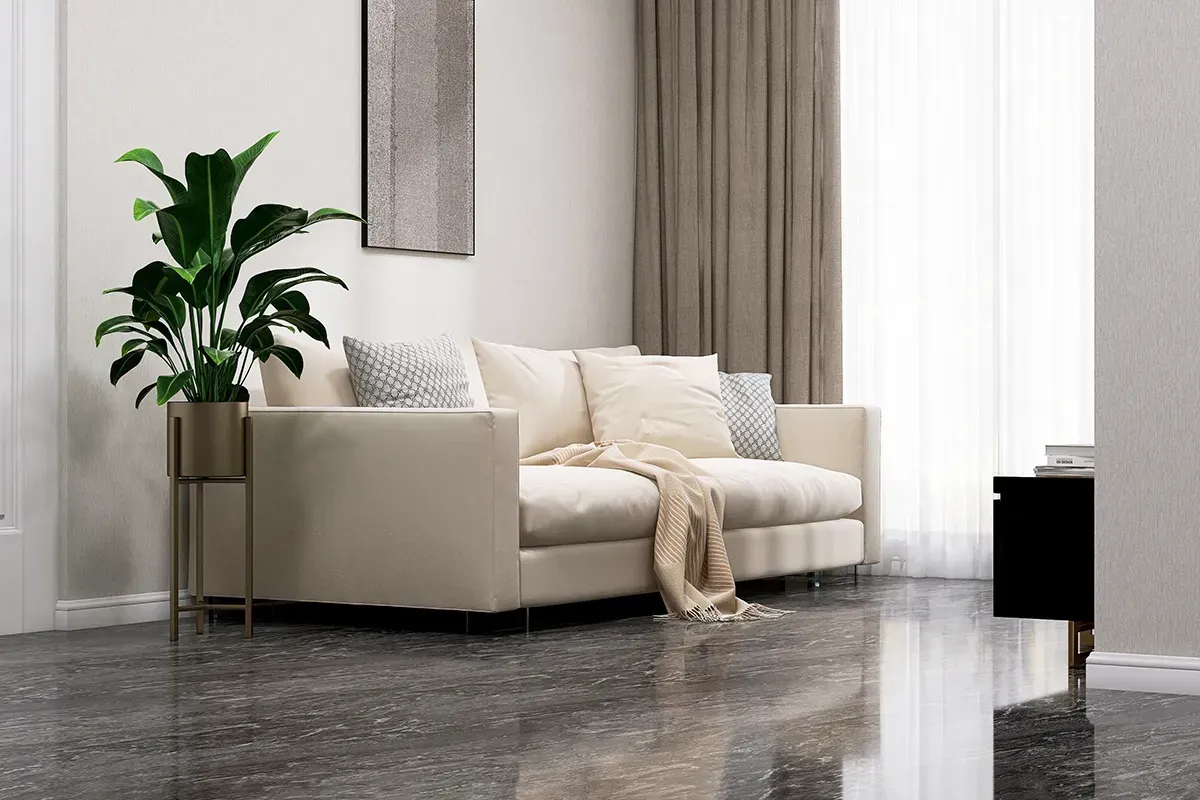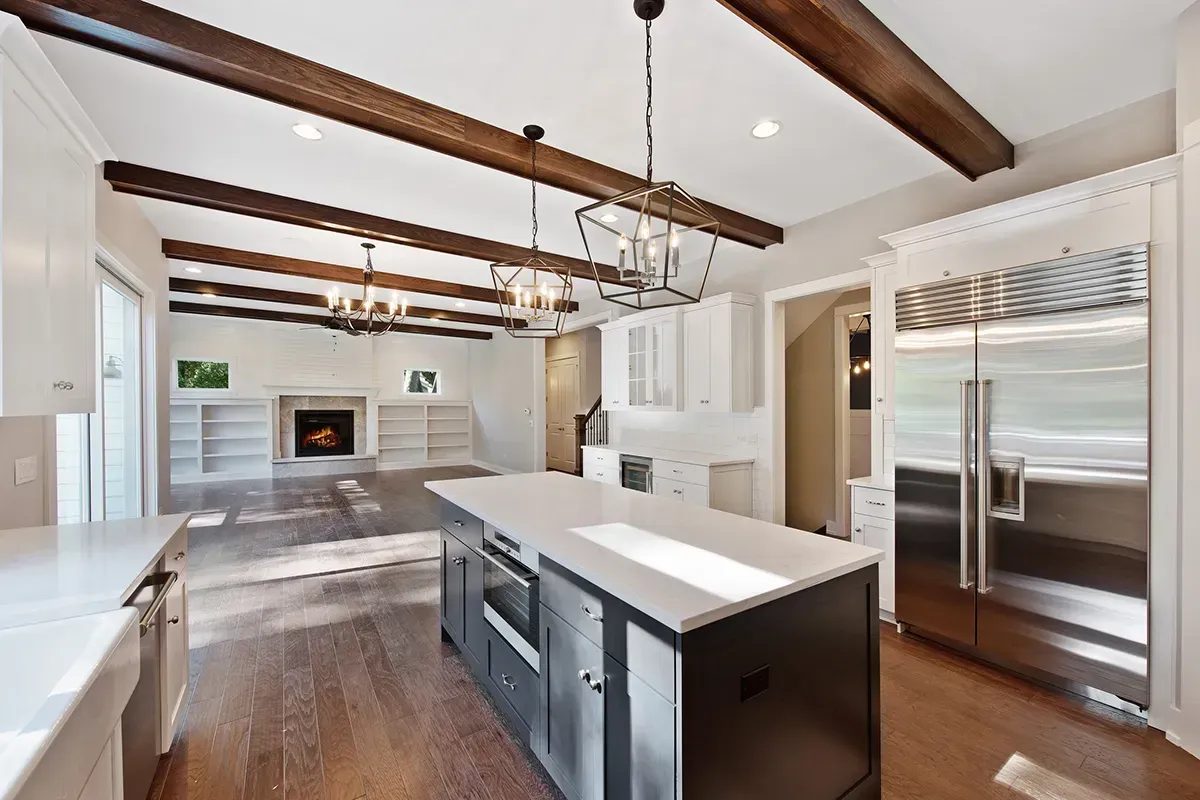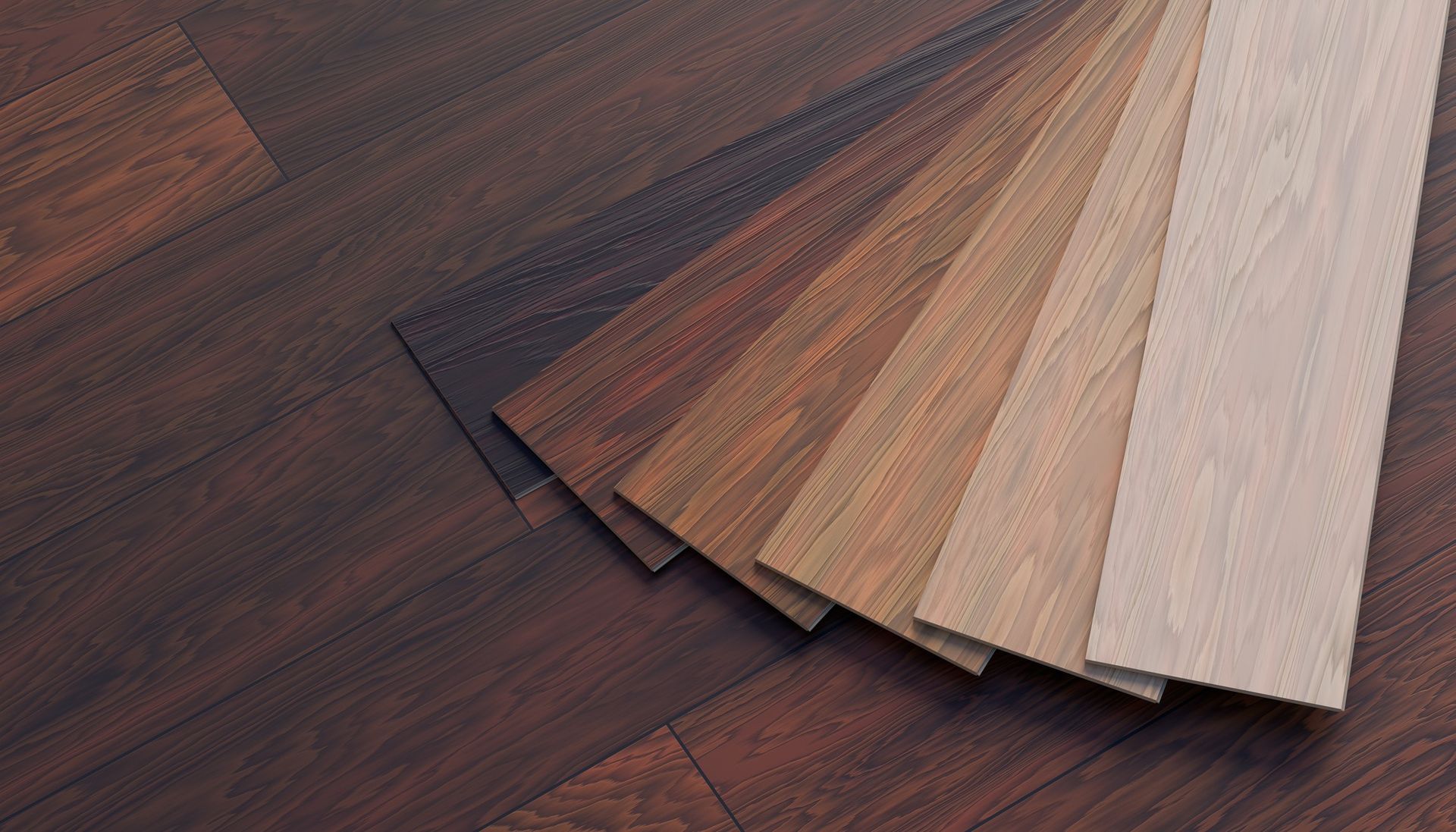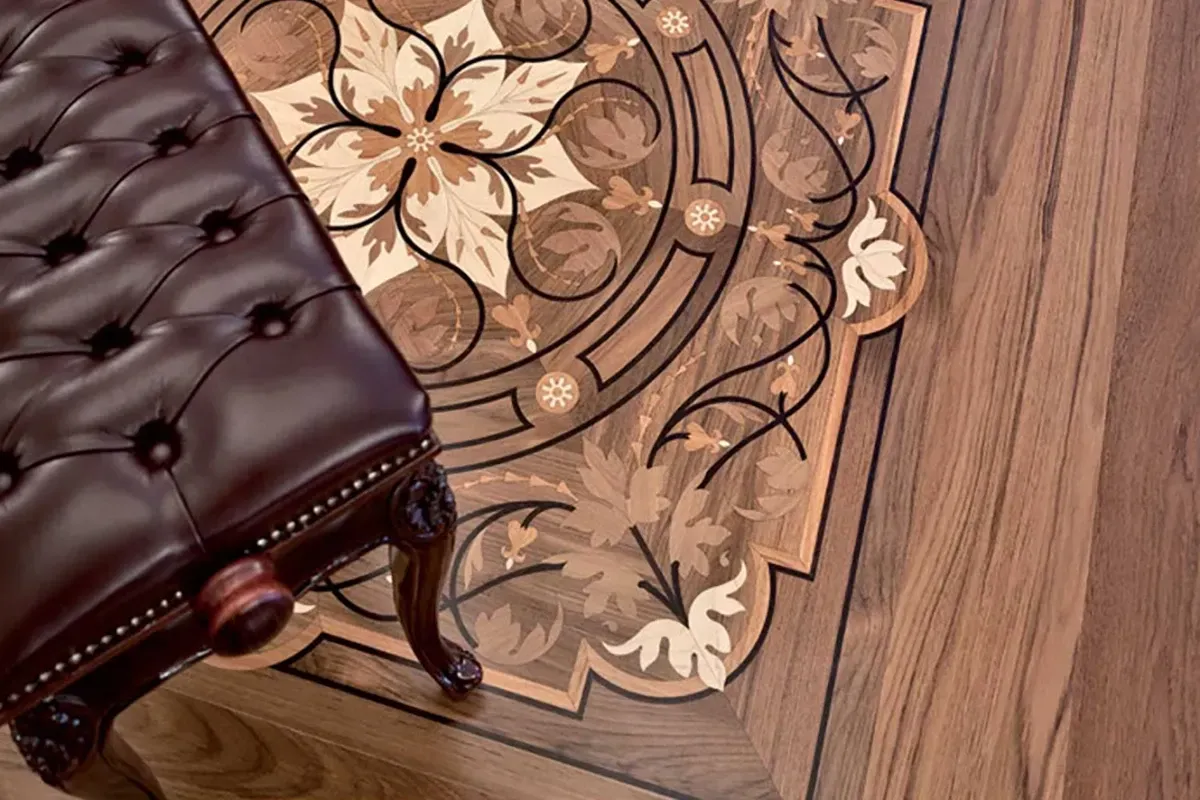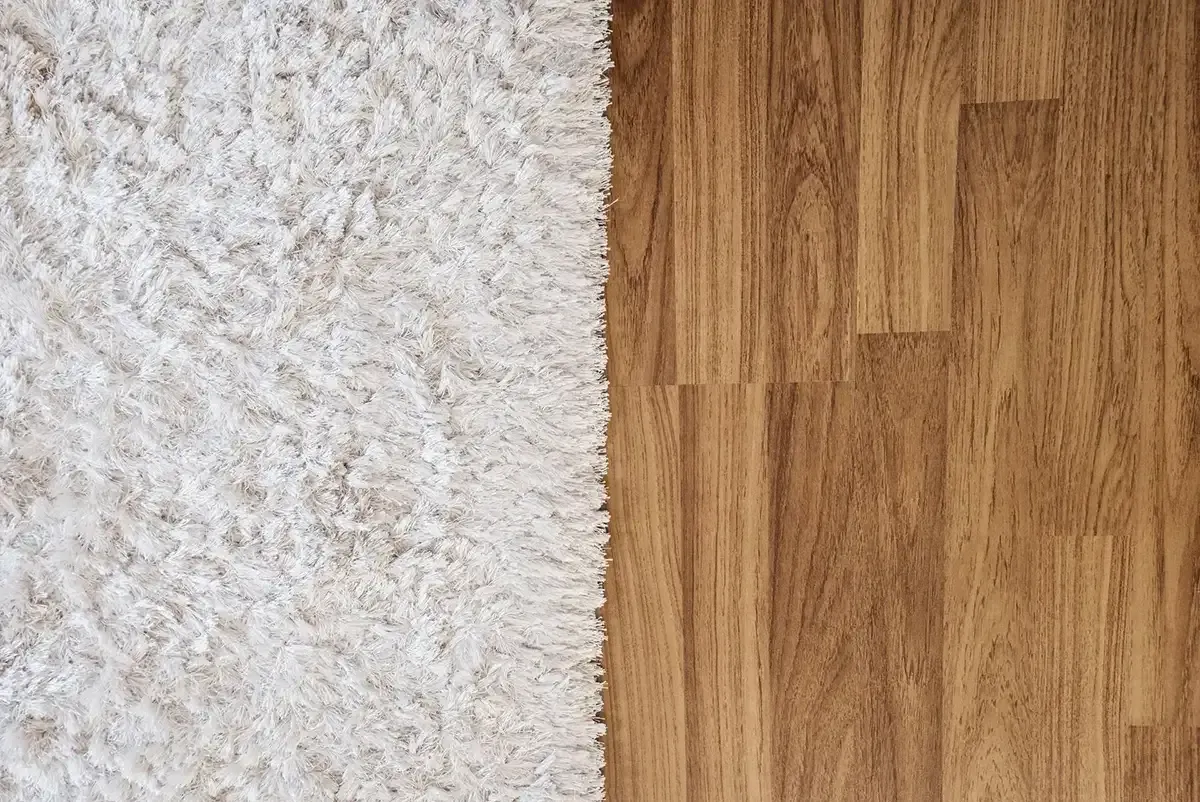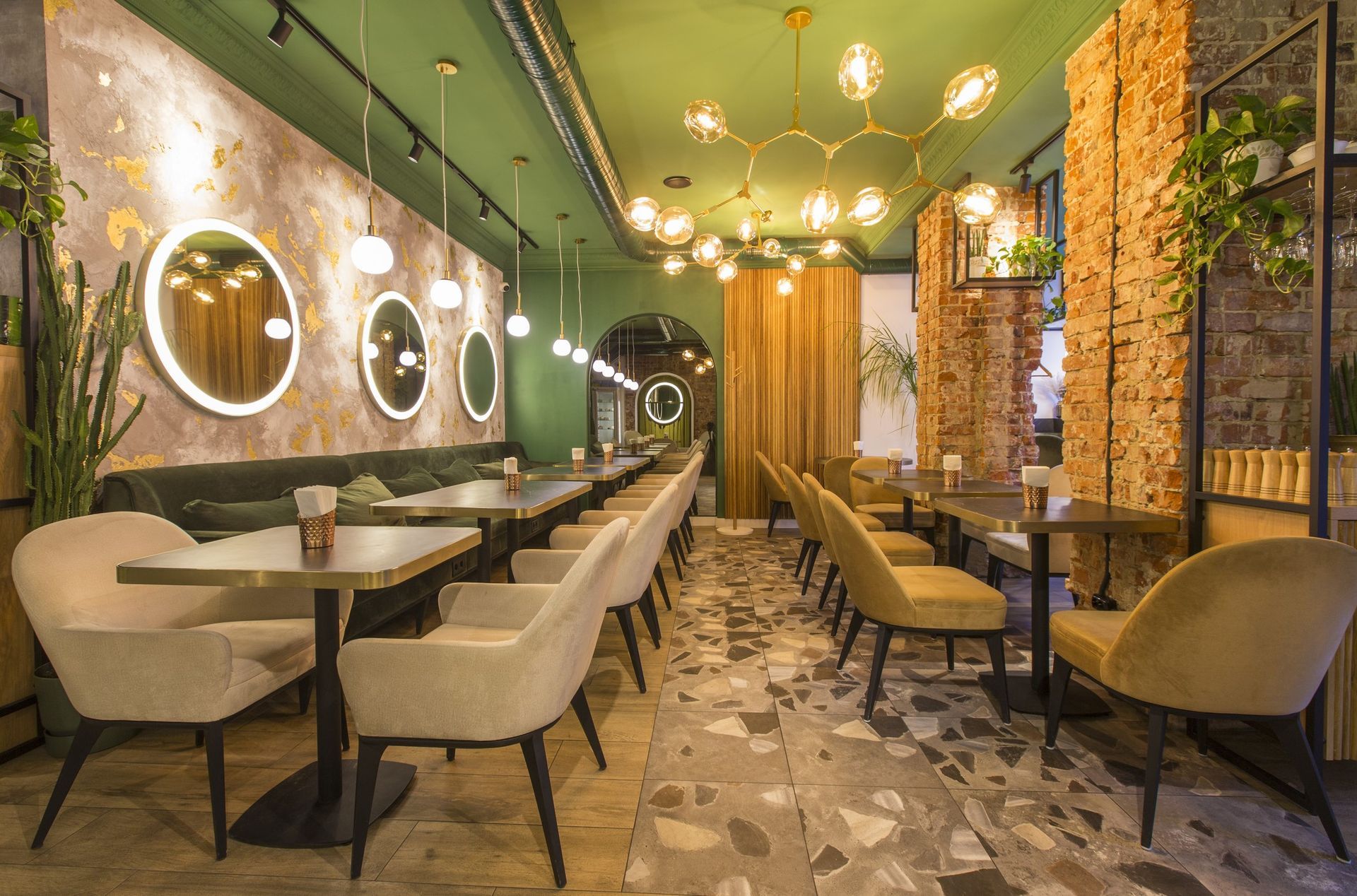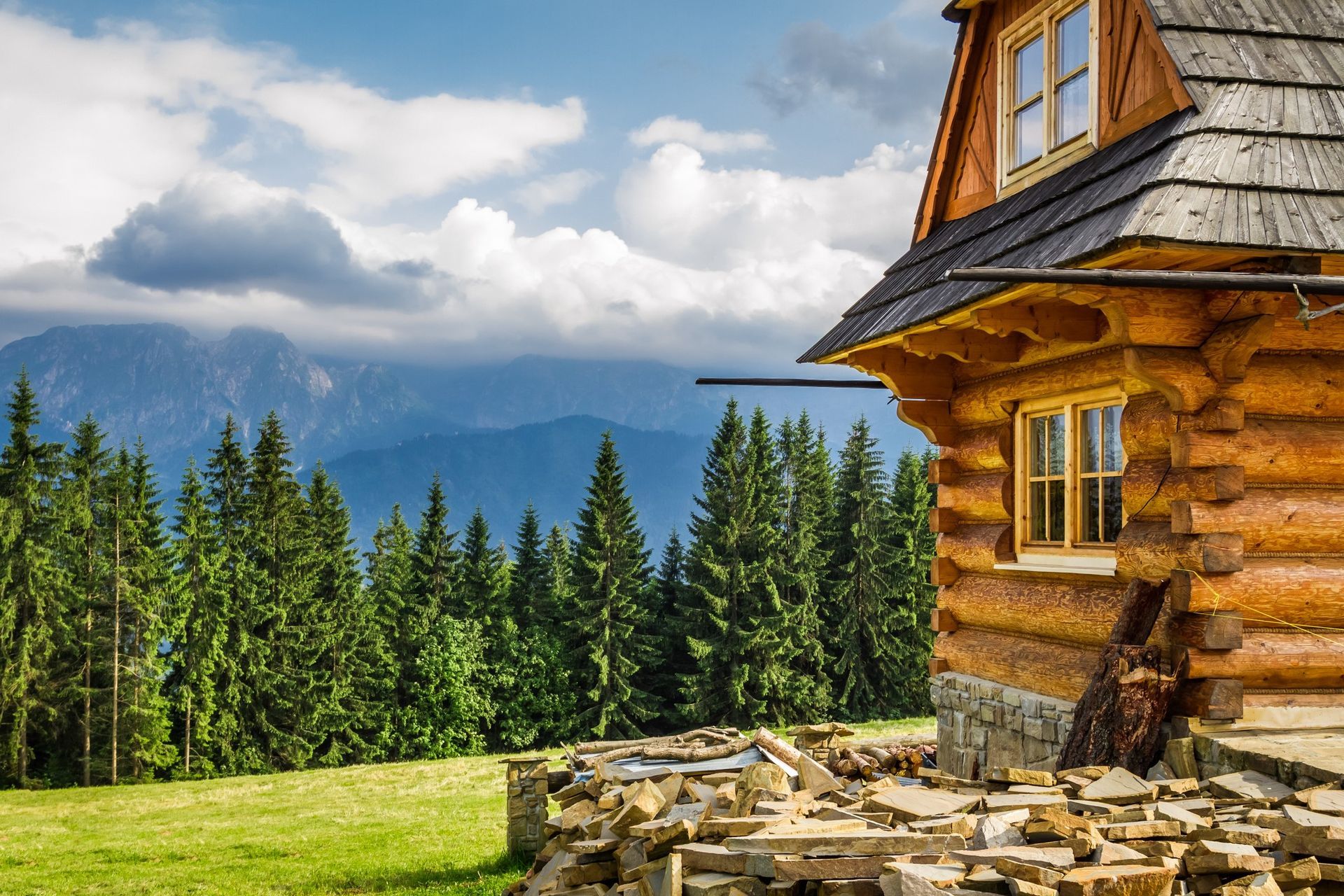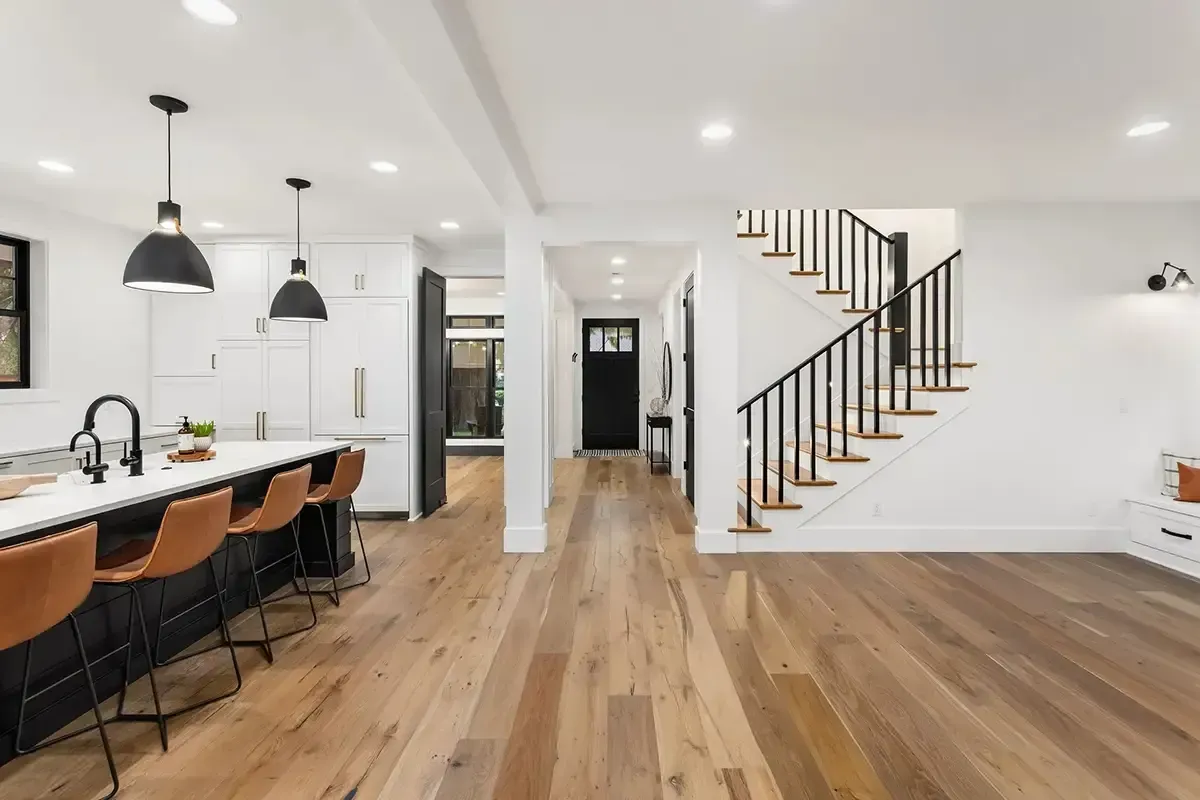Pine Flooring Explained
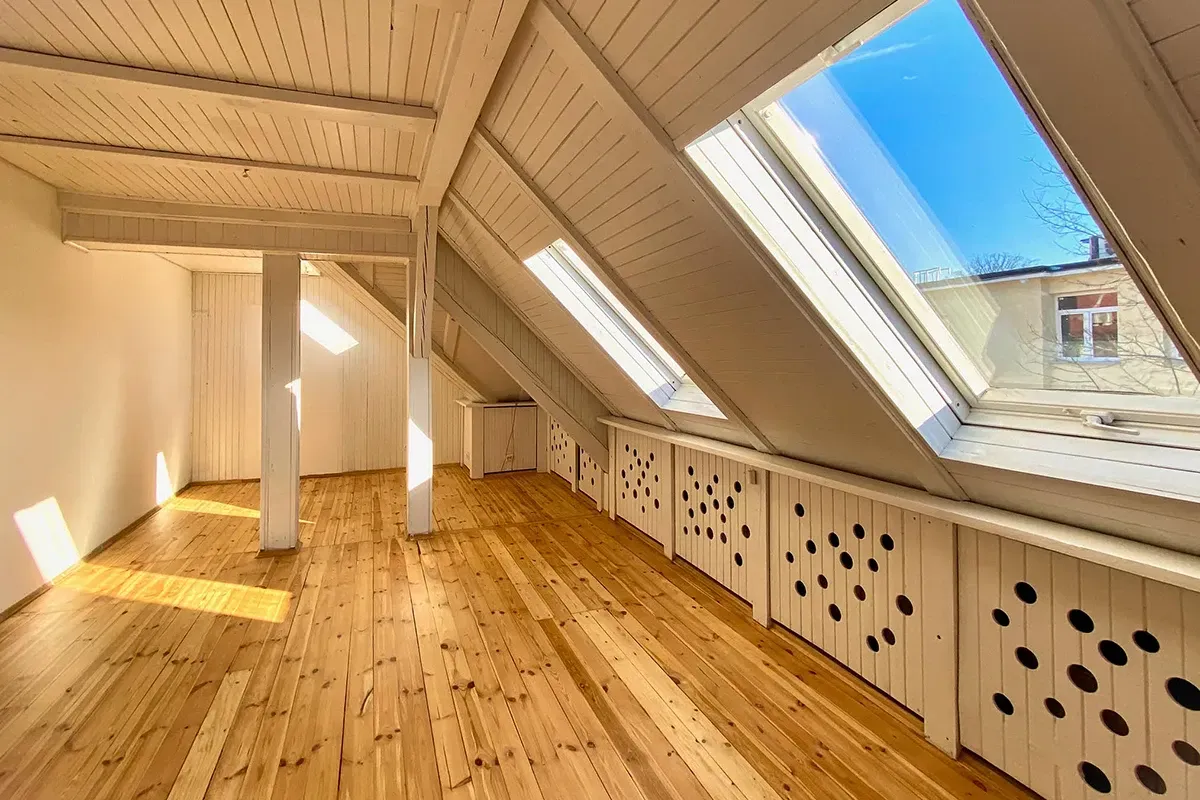
Pine flooring has long been a beloved choice for homeowners seeking warmth, charm, and affordability. Though technically a softwood, pine offers unique qualities that make it a standout option for certain spaces. However, with its lower durability compared to hardwoods, it's important to consider alternatives like red oak, white oak, maple, birch, and hickory for high-traffic areas.
This guide delves into what pine flooring is, along with its pros and cons. We'll also explore how it compares to domestic hardwoods, and offers insights to help you make an informed flooring decision.
What is Pine Flooring?
Pine flooring is a type of wood flooring made from pine trees, which are softwoods known for their distinctive grains, natural beauty, and affordability. Pine flooring offers a rustic and traditional look, often used in cabins, country-style homes, or spaces aiming for a warm and inviting aesthetic.
Characteristics:
- Softwood: Pine is softer than hardwoods like oak or maple, making it more susceptible to dents and scratches. However, this can add character over time.
- Grain Pattern: Pine flooring typically features prominent knots and grains, contributing to its rustic charm.
- Color: Pine starts as a light, yellowish hue and darkens over time, developing a rich, amber patina.
- Durability: While softer than hardwood flooring, pine flooring can last for decades with proper care and maintenance.
Types of Pine:
- Heart Pine flooring: Harvested from the heartwood of older pine trees, it is denser and more durable than standard pine.
- White Pine flooring: Lighter in color and softer, making it less durable but still visually appealing.
- Southern Yellow Pine flooring: Known for its durability and distinct yellow hue.
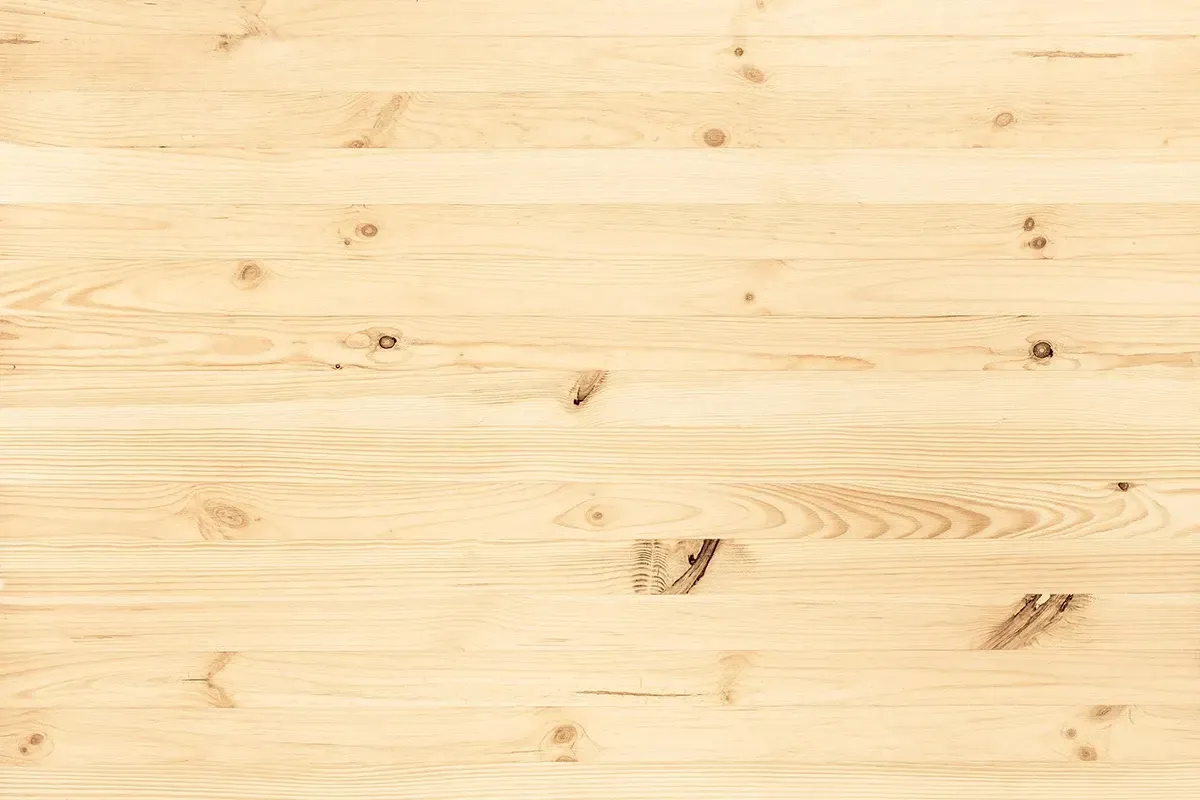
Pros:
- Cost-Effective: Generally more affordable than hardwood options.
- Eco-Friendly: Pine grows faster than hardwood trees, making it a sustainable choice.
- Aesthetic Appeal: Offers a timeless, rustic appearance.
Cons:
- Softness: Pine is classified as a softwood, making it more prone to dents, scratches, and wear than hardwoods.
- Maintenance Needs: Pine floors may require refinishing more frequently to maintain their beauty.
- Limited Durability: In high-traffic areas or homes with pets, pine’s softness can shorten its lifespan.
Durability and the Janka Hardness Scale
The Janka hardness scale is a tool used to measure the hardness of wood, which directly relates to its durability. Pine, as a softwood, has a much lower Janka rating than domestic hardwoods.
Here’s how pine compares to popular hardwoods:
- Eastern White Pine: ~380
- Southern Yellow Pine: ~870
- Birch: ~1,260
- Red Oak: ~1,290
- White Oak: ~1,360
- Maple: ~1,450
- Hickory: ~1,820
While pine is ideal for areas with lower foot traffic or for achieving a rustic look, hardwoods are better suited for high-traffic areas or homes with active families and pets.
Exploring Alternatives: Durable Domestic Hardwoods
If durability and longevity are top priorities, domestic hardwoods offer excellent alternatives to pine flooring. These woods combine beauty and strength, ensuring they can withstand the demands of everyday life.
1. Birch Flooring
Birch is a versatile and stylish hardwood with a fine grain and light, creamy tones.
Advantages:
- Strong and durable, with a higher Janka rating than pine.
- Offers a warm and inviting aesthetic.
- Works well in both contemporary and traditional spaces.
2. White Oak Flooring
White oak has a more subdued appearance compared to red oak, with neutral tones and a sleek grain pattern. Check out our recent white oak flooring installation. If you'd like more information, we also wrote a red oak vs white oak flooring comparison article.
Advantages:
- Superior water resistance compared to other hardwoods, making it ideal for kitchens and entryways.
- Versatile for both modern and traditional interiors.
- High durability and longevity.

3. Red Oak Flooring
Red oak is a classic choice, known for its strength and striking grain patterns. Check out our recent red oak flooring installation.
Advantages:
- High durability, ideal for high-traffic areas.
- Vibrant reddish hues that add warmth to any room.
- Complements a wide range of design styles.
4. Maple Flooring
Maple is prized for its smooth texture and light color, making it a favorite for minimalist and modern designs.
Advantages:
- One of the hardest domestic woods, offering excellent resistance to wear and tear.
- Minimal grain pattern for a clean, sophisticated look.
- Perfect for busy households with children or pets.
5. Hickory Flooring
Hickory is the hardest domestic wood, known for its striking contrasts and rustic charm. Here's out recent Hickory flooring installation for more info.
Advantages:
- Unmatched durability, making it suitable for high-traffic areas.
- Unique grain patterns that create visual interest.
- Excellent for homes with active lifestyles.
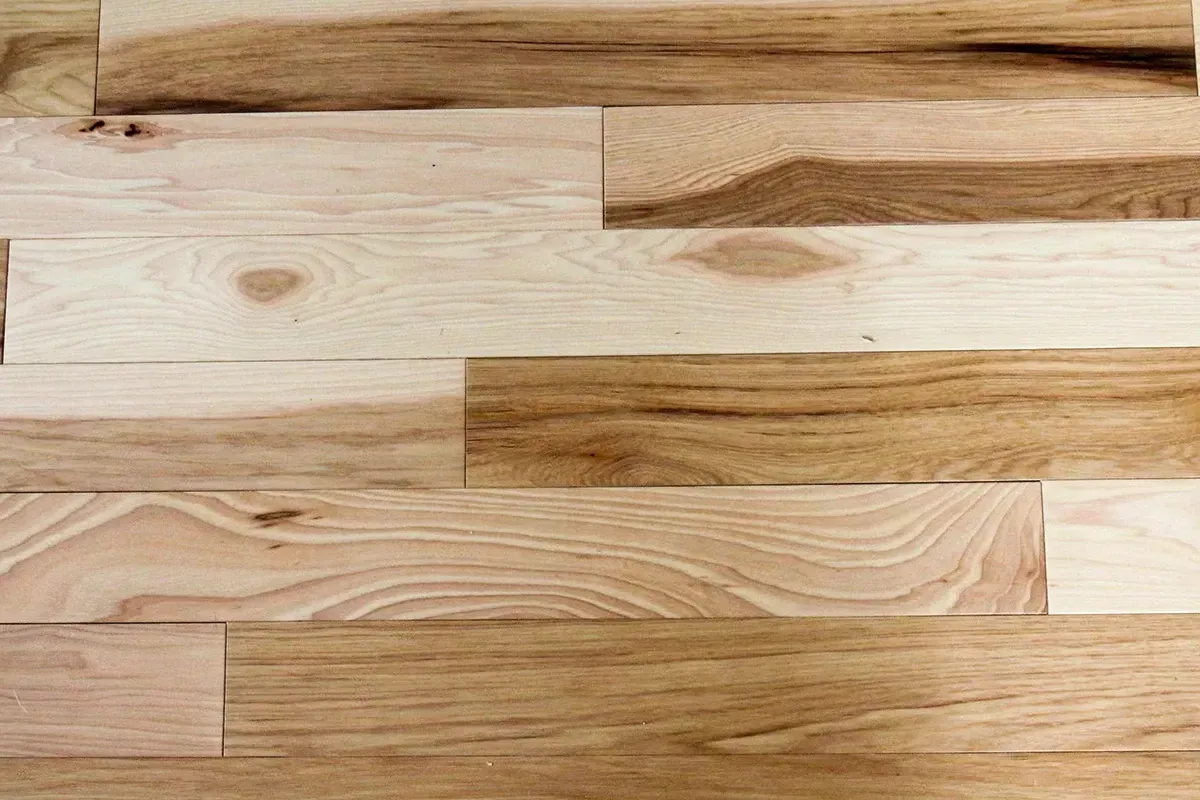
Hardwood vs Pine
When deciding between hardwood and Pine flooring, it’s essential to weigh your needs and preferences.
- Budget: Pine is significantly more affordable than hardwoods, making it an attractive choice for cost-conscious homeowners.
- Durability: Hardwoods like hickory and maple are far more resistant to wear, scratches, and dents, making them ideal for active households.
- Style: Pine’s rustic charm works beautifully in traditional settings, while hardwoods like white oak and birch offer versatility for modern and classic designs.
- Maintenance: Hardwood flooring typically requires less frequent refinishing than pine, reducing long-term maintenance efforts.
- Eco-Friendliness: Pine’s rapid growth rate makes it a sustainable flooring option, while hardwoods take longer to grow but offer greater longevity.
Tips for Installing Pine Flooring
If you’re drawn to the charm of pine, proper installation and care can help maximize its lifespan and beauty.
Installation Tips:
- Opt for professional flooring installation to ensure precision, especially with wide-plank pine flooring.
- Seal the wood with a durable finish to enhance resistance to moisture and scratches.
- Consider pairing pine flooring with area rugs in high-traffic zones to minimize wear.
Maintenance Tips:
- Sweep or vacuum regularly to prevent dirt and debris from scratching the surface.
- Use furniture pads to avoid dents and scratches caused by heavy furniture.
- Refinish pine floors periodically to restore their luster and protect them from further damage.
Blending Pine and Hardwoods for a Unique Look
In some homes, combining pine flooring with hardwoods creates a dynamic and visually interesting design. For example, you could use pine in bedrooms and living areas for its warmth and charm, while installing durable hardwoods like hickory or oak in kitchens, hallways, and entryways.
Sustainability
Both pine and domestic hardwoods like birch, oak, maple, and hickory are excellent choices for environmentally conscious homeowners. Pine is a renewable resource due to its rapid growth, while hardwoods are often sourced sustainably from managed forests.
Choosing the Right Flooring for Your Home
Pine flooring offers an affordable, eco-friendly option with timeless charm, making it an excellent choice for many homeowners. However, its softness may not be suitable for high-traffic areas or homes with pets and children. For those seeking greater durability, domestic hardwoods like birch, oak, maple, and hickory provide resilient and stylish alternatives.
By carefully considering your budget, lifestyle, and design preferences, you can select a flooring option that will enhance your home’s beauty and functionality for years to come. Local homeowners are invited to reach out to our knowledgable specialists or stop by our
floor store in Portland, Oregon.

